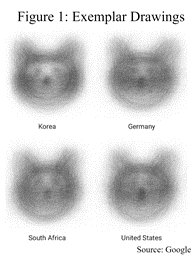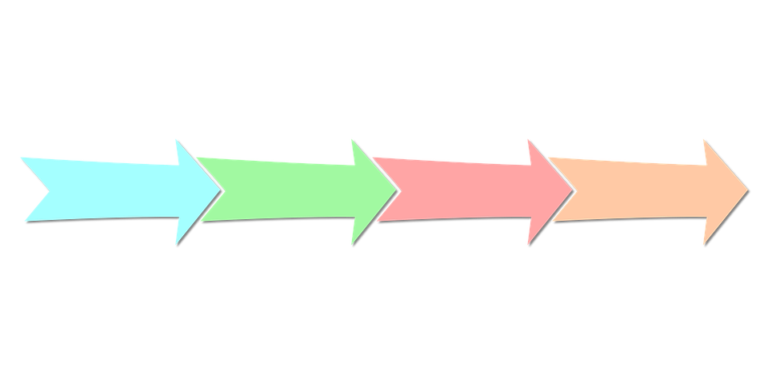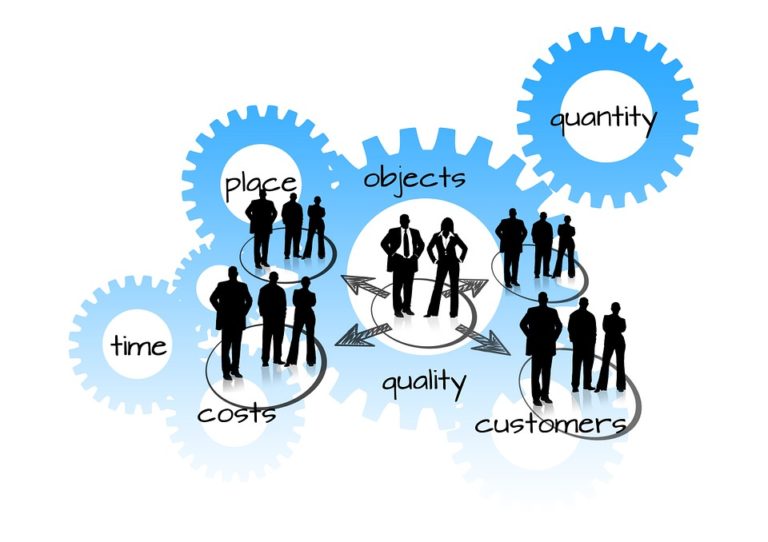Process Mining, Situational Awareness, and Competitive Advantage
“My dear, here we must run as fast as we can, just to stay in place. And if you wish to go anywhere you must run twice as fast as that.”
The Red Queen, in “Through the Looking-Glass” by Lewis Carroll
Introduction
Industry experts assert that data is the new gold. Even more valuable than data itself, however, are the insights which may be extracted from diverse, growing data streams. Businesses which include in their decision-making predictive insights derived from data streams will have a huge advantage over companies that make decisions using traditional methods.
For example, brand management and marketing experts describe growing corporate anxiety and a sense of urgency aas digital and technology capabilities seem to have accelerated during the COVID crisis. Brands are grappling with Gen Z and how that generation is driving cultural and marketplace shifts; for example, younger generations engage in employee activism and are beginning to hold employers accountable for social values. Moreover, deliberate information attacks can catch businesses off guard and seriously stymie revenues. Brand reputation and management are critical components to maintaining a growing bottom-line. Effective, rehearsed communication and crisis response plans help organizations communicate and reduce risk before, during, and after suspected brand attacks. New techniques, such as the one described in this article, can provide early warning to businesses so that they drive brand reputation, rather than react to problems.
In this article, I explain how process mining is being adapted for decision-making beyond understanding typical business processes. After reviewing traditional process mining utility in a corporate context, I describe our methodology for examining self-organizing process ecosystems. The United States Space Force (USSF), for example, is prototyping process technologies which allow space operators to plan and execute counter-maneuvers on orbit. Then, I make the case that these technologies may improve situational awareness and competitive advantage for businesses.
Editor’s Note: This article is a companion piece to the “State of Readiness” podcast where Joseph Paris interviews the author of this article, John Bicknell and where many of the themes presented in this article are discussed. Click here to listen to the podcast in either video or audio versions.
https://state-of-readiness.com/john-bicknell-ceo-and-founder-of-more-cowbell-unlimited/
Reading the Environment and Making Better Decisions
All United States Marine Corps second lieutenants go through The Basic School (TBS) in Quantico, VA. TBS is a six month program which teaches newly commissioned officers how to lead a rifle platoon and win battles. In the early 1990s, land navigation was a major part of the curriculum which culminated in a day-long graded orienteering event which consisted of finding marked ammunition cans scattered across training areas. During this portion of the TBS syllabus, I remember distinctly one of the instructors telling a joke that went something like this:
Two second lieutenants were out practicing their land nav skills, when they encountered a bear. One of the lieutenants immediately dropped his alice pack and replaced his combat boots with running shoes.
The other lieutenant said, “Hey man, there’s no way you’re gonna outrun that bear.”
To which the first lieutenant replied, “I don’t have to outrun the bear, I only have to outrun you.”
Setting aside the fact that the quick-acting lieutenant should not abandon his buddy, the joke is relevant for the 21st Century business world. The Red Queen hypothesis, encapsulated in the quote at the top of this article, was coined in evolutionary biology to explain that a species must adapt and evolve not just for reproductive advantage, but also for survival because competing organisms also are evolving. The analogy applies to the competitive business landscape, as well. Companies are engaged in a never-ending evolutionary arms race to survive. As described in a recent Cognitive Crucible podcast episode, “beating the competition is about better, faster, data-driven decisions.
In the not-too-distant future, tools will exist which allow CEOs to assess their competitive environments constantly, make decisions based upon fluid conditions, and outcompete other players in the system with timely adjustments to business operations. It all starts with understanding exemplar processes, which are everywhere.
Curious? Read on.
Process Mining and Exemplar Processes
Big process mining firms, such as Celonis, provide companies a data-driven way to x-ray processes, find inefficiencies, save money, and manage risk. Process mining is also used as a foundational capability in support of digital transformation projects–and for good reason. Organizations are feeling existential competition from disruptive startups as well as from firms such as Amazon that are leveraging data to conquer new operational territory. Process mining algorithms discover processes in a fraction of the time compared to traditional, subjective process mapping methodologies. Smart businesses are using process mining to create comprehensive process inventories in order to prioritize improvement and automation efforts. Depending upon organization structure and management styles, process mining may either complement existing business process management efforts or substitute for such efforts. Quick return on investment use cases highlight pain points empirically, help organizations save on costs, and re-purpose savings into prioritized capabilities. Deeper and more impactful use cases increase organizational agility and enhance competitive advantage.
Along these lines, it is natural for executives to think of processes as intentional groups of activities which serve the bottomline. A talent acquisition process, for example, might include: creating a job requisition, advertising the position, collecting applications, conducting phone interviews, conducting in-person interviews, making a job offer, and so on until the hire is complete. Other typical processes include: travel liquidation, purchasing, trouble tickets, parts manufacturing, client onboarding, and nightly janitorial cleaning. Mature organizations may have hundreds of discreet administrative processes.
Few corporate leaders, however, understand that natural, emergent processes form absent human intention yet are discoverable, as well. Crop growth, cultural interactions, daily routines, social network dynamics, animal foraging behavior, glacial activity, and corporate communications may all be considered processes. Like business processes, emergent processes have definable activities. For example, typical crop activities include growth stages such as: seed, sprout, small plant, mature plant, harvest, decay. Your daily routine may include the following activities: wake up, brush teeth, get dressed, eat breakfast, and so on. You may notice that some emergent processes are ordered. We would never expect a mature plant process activity stage to precede sprout, for example; nor would the harvest activity happen without first passing through the small plant activity state. This is not the case with daily routines; another person may typically eat breakfast before getting dressed; others still may not brush their teeth at all in the morning.
Animals have predictable behavior which may be modeled, as well. Spiders, for example, have a “wait” activity state that repeats until something happens which causes the spider to “pounce.” Notice that this is also a predictable stimulus-response pattern which may be generalized. Spiders tend to wait patiently while constantly monitoring their web ecosystem; when a bug lands in spider webs, they pounce. This is an expected reaction to a stimulus. Using this knowledge, it is easy to spoof a spider by tossing a bit of bread or other object which might be mistaken as a bug into the web. The spider will reflexively pounce on the object.
What about human examples of reading the environment and making appropriate business decisions? Before accurate weather forecasting, farmers could tell when rain was likely by observing trees. Due to changes in humidity, leaves tend to curl before the rain begins. This provides farmers and ranchers sufficient time to take necessary precautions with their livestock and equipment. Presumably, this gave their families and businesses a small but important advantage over those who did not read and react to the environment appropriately. Similarly, campfire smoke changes in advance of weather. In a more modern context, supply chain shocks can presage shifts in raw material costs.
Google has an instructive project called Quick Draw. This web game uses neural networks to recognize drawings. Since November 2016, people all around the world have drawn billions of doodles. While no two drawings are identical, composite overlays reveal patterns by nation or culture, Figure 1. I call these exemplar drawings.
Similar to individual doodles, individual process instances may bear little resemblance to one another, as we noted a moment ago with different morning routines. However, if sufficient numbers of process cases are examined, then an exemplar process emerges which may be used to anticipate near term outcomes, surface anomalies, or perform competitive maneuvers. This is why the USSF wants to understand ecosystems of satellites as processes.
Into Space, the Ocean, and Back onto Dry Land
The space domain has become a congested, contested, and competitive environment through which the United States of America, its allies, and commercial partners must operate with high-fidelity awareness for the safety and security of our space resources. In order to operate safely and at the speed of relevance, satellites must be observed and analyzed to predict near-term outcomes so the USSF can conduct various missions. These missions occur in all orbit regimes from Low Earth Orbit (LEO) to Geosynchronous Earth Orbit (GEO). Without high fidelity predictive capabilities, USSF risks collisions in space which can, in turn, lead to cascading collisions with potential for space to become inaccessible and inoperable. Because we are increasingly reliant upon space-based services, disruption effects on the global economy would be profound. This would be a very bad outcome, indeed.
According to publicly available satellite observations, orbital behavior differs by country of origin (much like common object doodles from different cultures vary, see Fig. 1). Rather than looking at orbital regime change, however, our current efforts with the USSF are making inferences about GEO activities such as: attitude modifications, robotic arm extensions, solar panel adjustments, rocket fuel burns, station keeping maneuvers, rendezvous and proximity operations, cross-track maneuvers, and in-track maneuvers. As described previously, these activities may be examined as an emergent process. When dozens or hundreds of similar spacecraft in GEO are analyzed together, then an exemplar process will emerge which can be used to help the USSF perform its mission and hold adversaries at risk continually.
But what about responses to ecosystem stimuli? Here’s a fun fact: the Sun has an eleven year Solar Cycle. (Also, a process!) Solar Cycle 25 is just beginning. For the next three to five years, we can expect increasing amounts of solar activity–sun spots, proton storms, and coronal mass ejections. Commercial space outfits and governments are very interested to understand the effects of the hostile space environment on expensive satellites and equipment. In 1859, a powerful geo-magnetic storm, which has been named the Carrington Event, caused telegraph system failure all over Europe and North America. The USSF and commercial satellite operators are very interested in understanding solar effects on expensive space infrastructure.
To investigate this, we performed a pattern of life analysis using whale ecosystems as proxies for spacecraft constellations. Changes in whale foraging and diving behavior during different periods of solar intensity are evident. An expert from the Office of Naval Research hypothesized that solar intensity may actually be affecting plankton or krill behavior, which in turn affects whale behavior. Regardless, we observe an ecosystem stimulus and then a response. In this case, the ecosystem being observed is a pod of whales. The stimulus is solar intensity, and the response is a predictable change in ecosystem behavior.
Bringing this discussion back down to Earth and onto dry land, these techniques are relevant for the business world. An important feature of process models, or information maps, is that they are constantly changing to reflect the dynamic nature of the competitive corporate information environment. They can answer questions; provide awareness dynamically; and help plan, monitor, and appropriately modify operations. Mapping of process patterns continually is a challenging but achievable task. It is the knowledge of patterns within decision-making processes that allows an astute corporate leader to manipulate ecosystems in ways that advantage the business.
In yet another prototype, we used corporate email data to examine an emergent communications ecosystem. Like the Google Doodle project mentioned above, employees send and receive emails according to their own habits and work tempo. Yet, when dozens or hundreds of employee activities are examined as an ecosystem, a process emerges with probabilistic flows of information. In our corporate email study, the informal, emergent corporate process suggests ways information may be injected into the ecosystem in order to disrupt operations, distract executives, or drain resources with frivolous activity.
What if dozens of organizations from the same industry, for example health care or financial services or energy, were modeled in this fashion? Further, what if these examinations documented meticulously how ecosystems of like-organizations tended to react to the same stimulus? The stimulus could be a sector-specific newsworthy item, such as a major acquisition or bankruptcy. Or, the stimulus may be a DDOS attack or other cyber attack. Or, perhaps even a significant commodity price change for especially important production materials. My hypothesis is that these corporate ecosystems will react predictably to these and many other stimuli.
Finally, organizations are increasingly concerned about reputation management and safety. Customers are not responding to advertising the way they used to. Modern consumers and employees are looking beyond surface messaging, and are diving into a brand’s ethics, actions and values—even looking at where ads appear as an indication of those values. Moreover, information is being used as a weapon to tarnish brands. In late 2019, Epic Games came under a “coordinated and deliberate creation and promotion of false information” as well as “harassment of partners, promotion of hateful themes, and intimidation of those with opposing views.” More brands and businesses are monitoring their information environments in order to stay abreast of scrutiny and identify information-related attacks as soon as possible. Process technologies can help organizations monitor their social media ecosystems, quickly identify activities which affect brand reputation, and mitigate damage with effective corporate communications.
Conclusion
This is just the beginning. How, exactly, businesses will improve situational awareness using process mining remains to be seen. Process mining is not just for modeling and improving business processes anymore. The US government is prototyping process technologies in order to outcompete adversaries in the contested space domain. Capabilities, like the one being developed by the Space Force, will discover subtle, important changes in the information environment and provide businesses with the ability to outpace the competition and make rapid decisions which capitalize on the ever-changing environment.
Corporate leaders in the 21st Century are like captains of sailing vessels on stormy competitive waters which are fraught with uncertainty and peril. Just as their maritime counterparts understood during the Age of Sail, the very best modern leaders understand that there are ways to navigate the corporate seas expertly, understand vulnerabilities and opportunities, maneuver at opportune moments, reap rewards, and steadily gain competitive advantage.
About the author
John Bicknell is a national security thought leader and passionate data science visionary. He has written extensively on national security matters related to information operations, critical infrastructure defense, and space domain awareness. John is CEO and Founder of More Cowbell Unlimited which uses patented process mining technologies to deliver actionable insights from emergent ecosystems. He is also a retired United States Marine Corps officer, Vice President of the Information Professionals Association and host of The Cognitive Crucible podcast.
LinkedIn: https://www.linkedin.com/in/johnbicknell
Website: https://morecowbellunlimited.com










